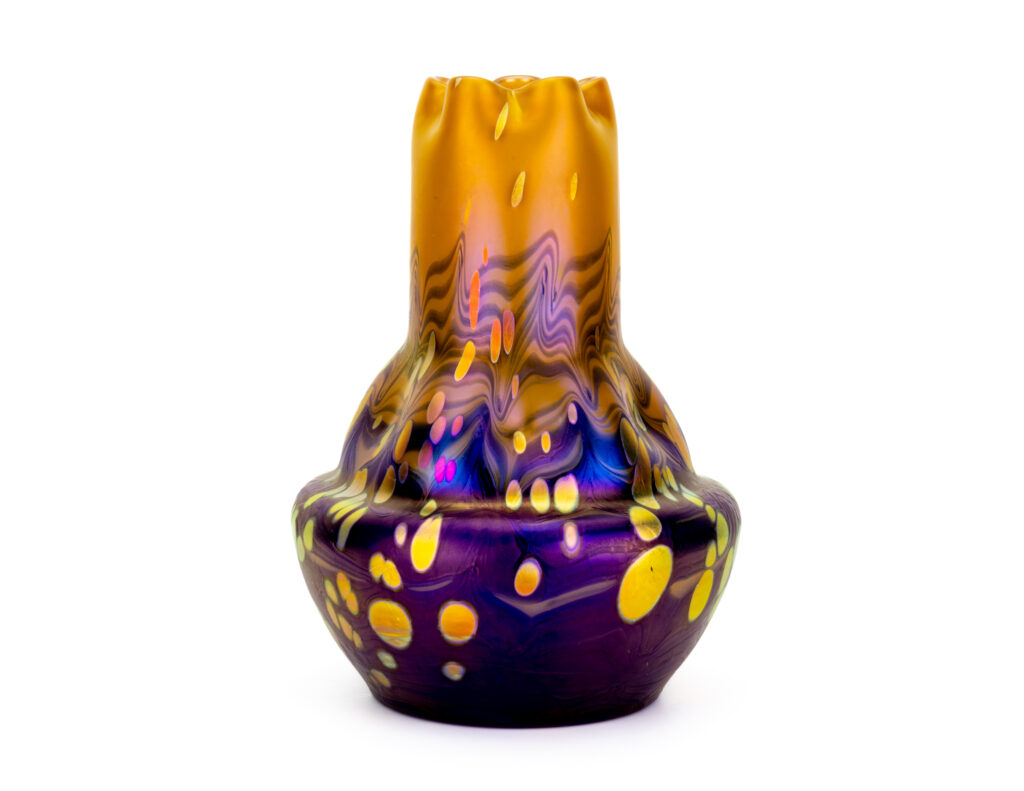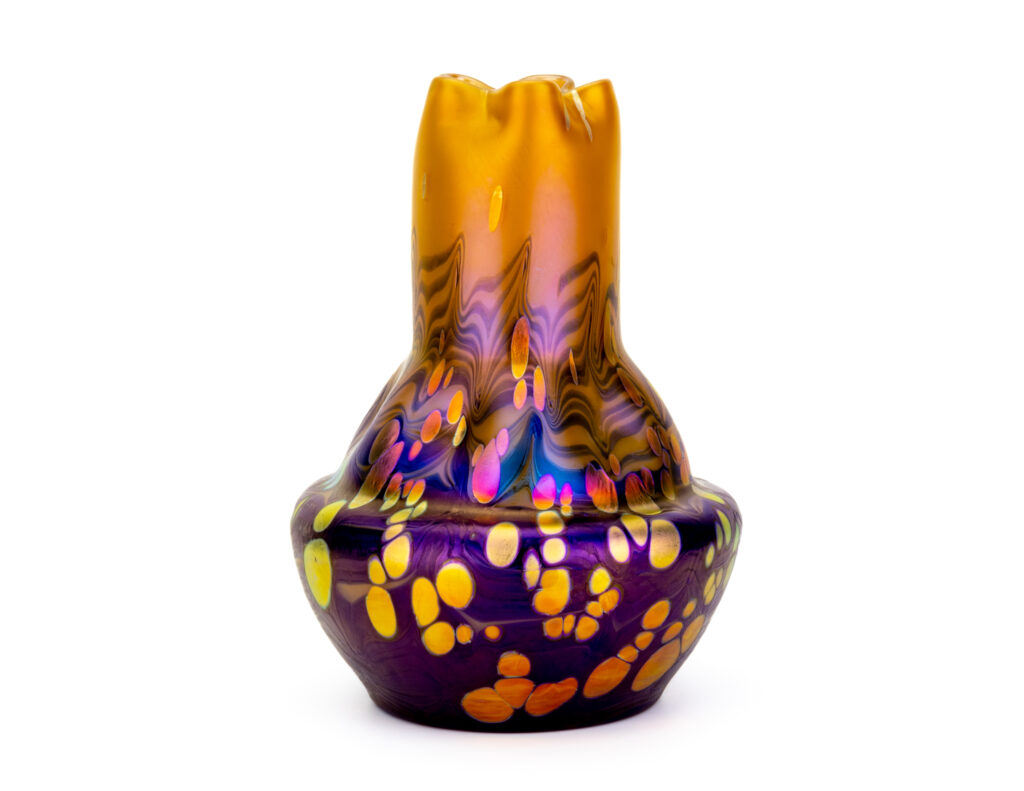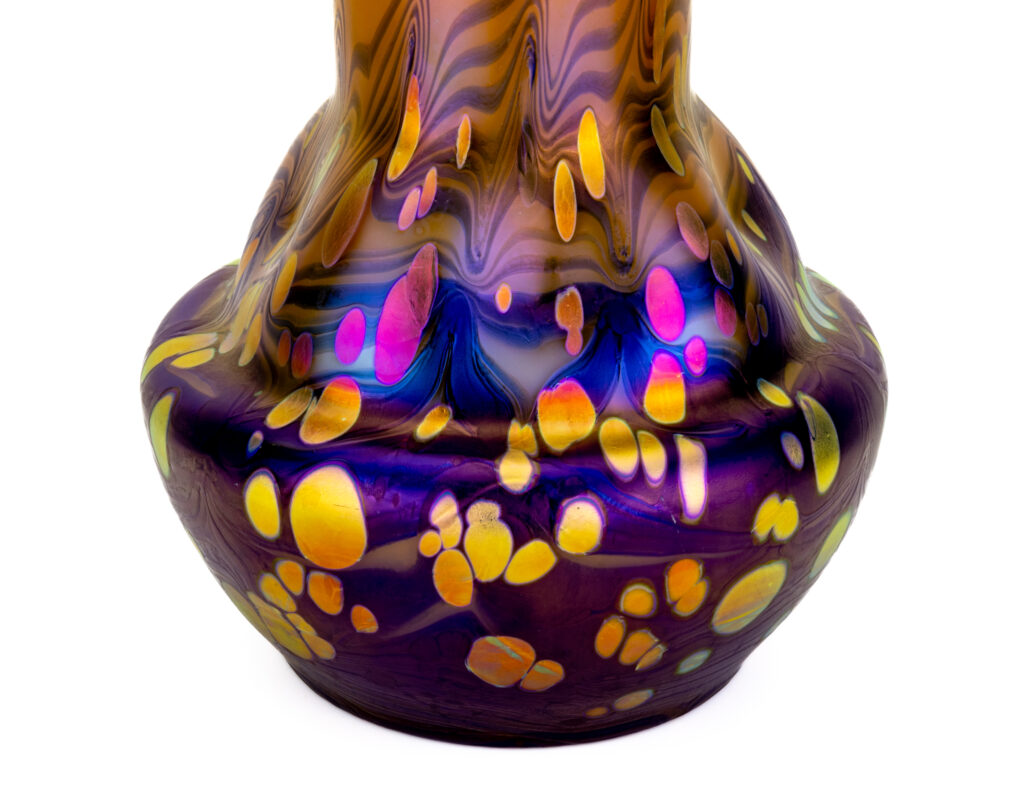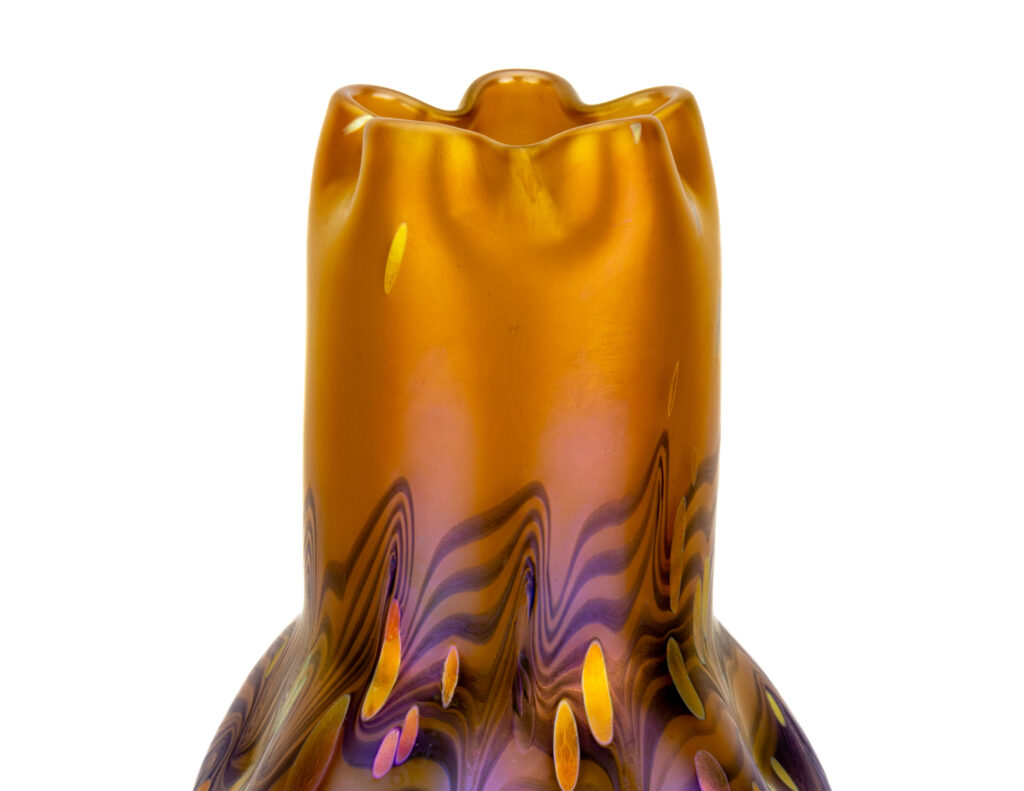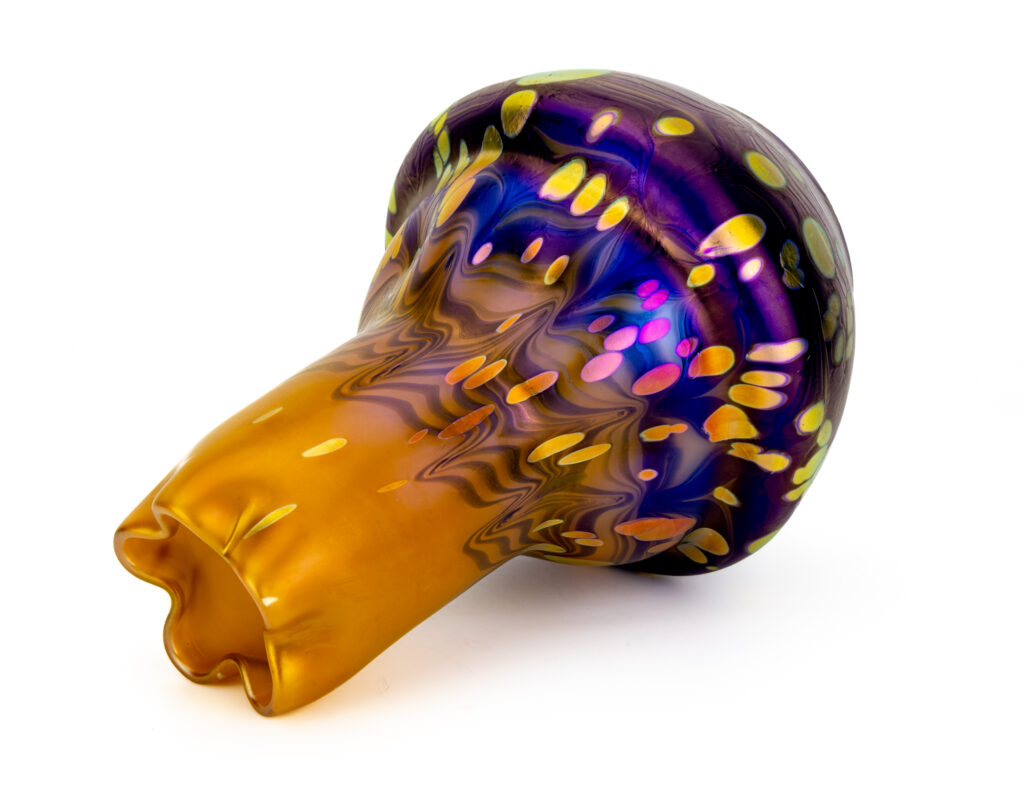Details:
Manufacturer: Johann Loetz Witwe
Decor: Cytisus
Style: Jugendstil
Material: Molded and free-formed glass, reduced, improved pontil, iridescent
Color: Neurot
Period: 1900 – 1909
Description:
The intricate, organic form of this vase, crafted by the Johann Loetz Witwe company, exemplifies the design trends that emerged shortly after the resounding success at the World Exhibition in Paris in 1900. The Loetz decor, known as Cytisus or “gold rain” due to its iridescent dots, stands out for its refinement and artistic flair, underscoring the exceptional quality characteristic of Johann Loetz Witwe’s productions during this period.
Executed in the ground color “Neurot,” this Cytisus vase features randomly drawn, wave-patterned blue threads of glass adorned with iridescent dots. The elaborate, organic shape and the carefully crafted indentations on the body attest to the glassblower’s skillful artistry in free-forming this object. The meticulous execution of the design highlights the mastery of Johann Loetz Witwe during this era, showcasing their commitment to both aesthetic sophistication and technical excellence.
Dimensions:
Height: 215mm / 8.46″
Diameter: 160mm / 6.29″
Condition: Mint
Literature:
Prestel – Böhmisch Glas 1880 – 1940 Band 1 Werkmonographie. Blz. 153.
Hatje Cantz – Lötz, Böhmisch Glas 1880 bis 1940. Blz. 121.
J. Lnenickova – Loetz – Series II Paper Patterns for Glass from 1900 to 1914 – Paper Pattern nummer II-1584. Blz. 226
Interested in this object? Please click here to send us a message using the contact form.
